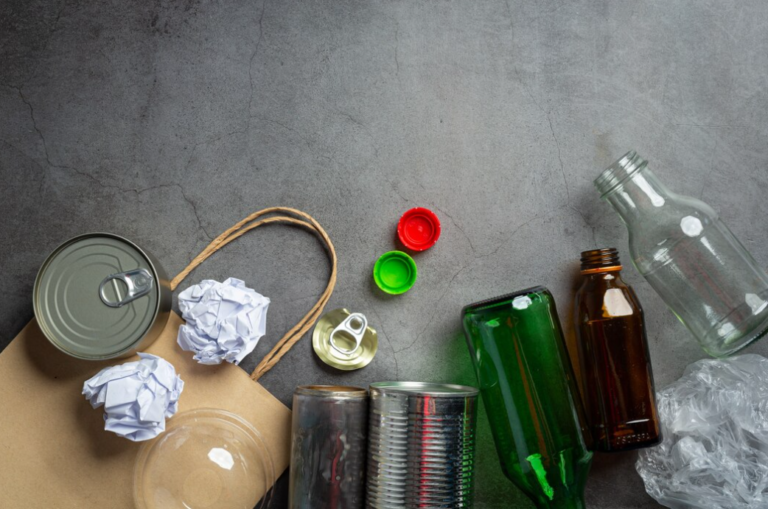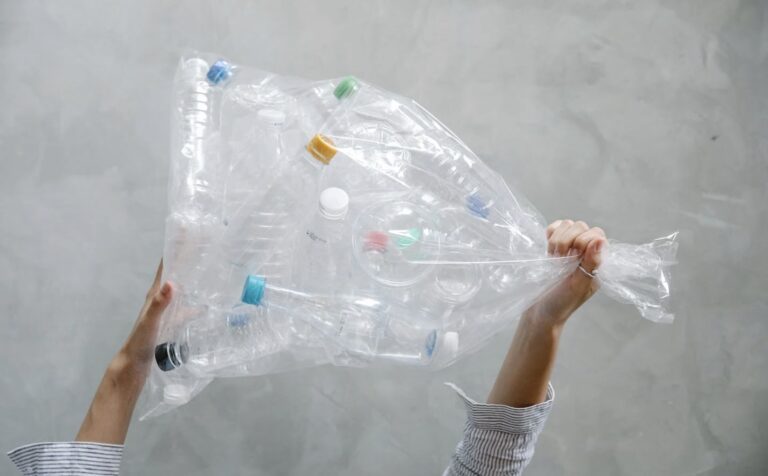Recycling isn’t just a trend, it’s a way of life! Ever wondered why we are encouraged to separate recyclables and how to do it correctly? Well, let’s embark on this journey together, uncovering the methods and the motives behind recycling.
The Basics of Recycling
If you think about it, recycling is like Mother Nature’s form of spring cleaning. Just as we wouldn’t throw dirty laundry and dishes in the same basket, recycling requires sorting too.
What is Recycling?
Recycling is the transformative process of converting waste into reusable materials. Imagine turning your old t-shirt into a rag or perhaps, a fashionable tote bag. That’s the magic!
Why Can’t All Recyclables Just Be Grouped Together?
Different materials have distinct recycling processes. Tossing them all together can contaminate the batch, rendering it useless.
Steps to Separate Recycling Like a Pro
Think of this as a recipe, but instead of cooking, we’re creating a greener future!
- Paper and Cardboard: Newspapers, magazines, office papers – they get their own bin. However, soiled or greasy paper, like pizza boxes, can’t be recycled the usual way;
- Plastics: Did you ever notice those tiny numbers inside the recycling symbol on plastic items? They aren’t there for fun! Each number indicates a different type of plastic;
- Glass: Color matters! Brown, green, and clear glass have different melting points;
- Metals: Think beyond soda cans. Even items like empty aerosol canisters can be recycled, but they’re a whole different category;
- Organic Waste: This is where your food scraps and yard waste go. Ever heard of compost? It’s like giving a treat back to the earth.
Why Bother? The Imperative of Recycling
- Resource Conservation: Recycling saves energy and raw materials. Remember, the earth’s resources aren’t endless;
- Economic Efficiency: Did you ever think recycling could boost the economy? It creates jobs and reduces the cost associated with trash disposal;
- Environmental Protection: Recycling reduces the need for landfills and combats pollution. Imagine a world where every breath feels fresh and clean;
- Combatting Climate Change: Recycling means less energy is used in the production process, resulting in fewer greenhouse gases.
Common Mistakes in Recycling
Even the best of us goof up sometimes. Here are some recycling faux pas to avoid:
Wish-cycling
The act of hoping something is recyclable without checking. It’s the thought that counts, but not in recycling.
Ignoring Local Guidelines
Every municipality has its own recycling rules. Always stay updated.
Beyond Recycling – Reducing and Reusing
Before we even get to recycling, can we reduce waste or perhaps reuse items? Grandma’s ‘waste not, want not’ has never been more relevant.
Reducing
Do you really need that plastic straw with your drink? Small choices make big impacts.
Reusing
That jar of jam could be your next DIY candle holder!

Recycling in Different Regions: The California Example
While recycling practices can be generally applied across the globe, region-specific guidelines often dictate the nitty-gritty of the process. Let’s zoom in on the Golden State – California.
The question on many minds is, how to separate recycling in California? California has always been at the forefront of environmental initiatives, with its recycling program being no exception. The state has detailed guidelines, but here are the basics:
California’s Blue Bin Recycling
In California, most households are accustomed to the blue bin system. While it allows for mixed recycling (papers, plastics, and metals together), it’s vital to ensure that items are clean and dry.
Organics and Yard Waste
Separate bins are provided for organic waste and yard waste, further driving home the importance of diversion from landfills.
Scrap Metal – The Recycling Goldmine:
Scrap metal is often overlooked, but did you know it’s one of the most lucrative recyclable materials? If you’ve been pondering on how to separate scrap metal for recycling, here’s a quick guide:
Ferrous vs. Non-Ferrous
The simplest way to determine the type of metal you have is by using a magnet. If it sticks, it’s ferrous (think iron and steel). If not, you’ve got non-ferrous metals, like copper, aluminum, and brass.
Sorting Table for Scrap Metal
| Metal Type | Examples | Color/Characteristic |
|---|---|---|
| Ferrous | Steel, Iron | Magnetic, Rusts over time |
| Non-Ferrous | Aluminum, Copper | Non-magnetic, Doesn’t rust |
| Precious | Gold, Silver | Shiny, Higher market value |
Keep ‘Em Clean
Just like other recyclables, ensuring metals are free from contaminants is essential. It not only fetches a better price but also makes the recycling process efficient.
The Digital Age of Recycling – Mobile Apps and Platforms:
In this digital era, your phone can be your recycling companion. Numerous mobile apps and online platforms guide you on proper recycling methods, tailored to your location.
Eco-friendly Apps
These apps can identify materials and guide you on how to dispose of them. Some even reward eco-conscious behaviors with points or incentives.
Online Community Forums
Platforms like Reddit and Quora have dedicated communities where individuals share insights, address doubts, and discuss region-specific recycling practices. A quick search on ‘how to separate recycling in California’ or any other locale can yield valuable first-hand advice.
The Impact of Improper Recycling
While the benefits of proper recycling are manifold, it’s equally essential to understand the repercussions of incorrect recycling practices.
- Contamination: This is the most common issue faced by recycling plants. When non-recyclable materials are mixed with recyclable ones, it can lead to the contamination of an entire batch, rendering it non-recyclable;
- The Cost Factor: Incorrect recycling can be an economic burden. Resources are spent on separating non-recyclables from recyclables, which increases the overall cost of recycling and reduces its financial viability;
- Environmental Setbacks: Instead of conserving energy, improper recycling can lead to increased energy usage and, thus, higher greenhouse gas emissions.
Recycling Etiquette – Best Practices
With numerous guidelines available, it can sometimes become overwhelming to ensure that recycling is done correctly. Here’s a cheat sheet for you:
| Do’s | Don’ts |
|---|---|
| Clean recyclables before placing them in bins | Assume something is recyclable without checking |
| Separate materials as per local guidelines | Throw hazardous waste in recycling bins |
| Flatten cardboard boxes | Leave caps on plastic bottles |
| Store recyclables in a dry place | Use plastic bags in recycling bins |
From Recycling to Upcycling
While recycling transforms waste into the same or lower-grade materials, upcycling is the art of converting discarded items into products of higher value.
- Upcycling in Fashion: Old jeans turned into tote bags or vintage fabrics made into patchwork dresses are classic examples;
- Furniture Upcycling: An old ladder can be transformed into a rustic bookshelf, or an antique window frame can find new life as a decorative mirror;
- Benefits of Upcycling: Not only does upcycling reduce waste and save resources, but it also promotes creativity and can result in unique, personalized items that have both sentimental and economic value.

Recycling Beyond the Household
While home recycling gets the most attention, it’s crucial to remember that institutions, businesses, and other venues play a significant role in waste generation and its management.
Corporate Responsibility
Today’s businesses are not only evaluated by their profits but also by their environmental stewardship. From tech giants to local cafes, implementing a robust recycling program can boost brand reputation and even bring about cost savings in the long run.
Schools and Educational Institutions
Schools have a twofold impact. They can manage waste from hundreds or thousands of students and, more importantly, instill the values of sustainability in the next generation.
Public Events and Venues
Concerts, sports games, festivals – these large-scale events generate massive amounts of waste. Having clear guidelines and facilities for recycling can significantly reduce their environmental footprint.
Materials Often Overlooked in Recycling
Many times, there are materials that we don’t even realize are recyclable. Ensuring we’re informed about these can increase our recycling efficiency. Here’s a list:
| Material | How to Recycle |
|---|---|
| Electronics | Drop off at e-waste facilities; many tech stores also offer recycling programs. |
| Corks | Some wine stores accept them for recycling, or they can be upcycled into crafts. |
| Batteries | Hazardous waste facilities or specific battery collection points. |
| Mattresses | Some cities offer mattress recycling programs, or they can be donated if gently used. |
The Future of Recycling – Innovations on the Horizon
The world of recycling is dynamic and ever-evolving. With technological advancements and increasing environmental awareness, we’re seeing innovative approaches to waste management.
- Smart Bins: These are equipped with sensors to detect the type and amount of waste, ensuring efficient recycling and even alerting authorities when they’re full;
- Robot-Assisted Sorting: Using AI and machine learning, robots are being developed to quickly sort through recyclables, reducing the need for manual labor and increasing efficiency;
- Chemical Recycling: A potential game-changer, this process breaks down plastics at the molecular level, allowing them to be reused for higher-grade applications;
- Eco-Apps with AR: Imagine pointing your phone at an item and instantly knowing how to recycle it. Augmented Reality apps are bridging the knowledge gap, making recycling easier for everyone.
Conclusion
Separating recycling isn’t just about following rules. It’s about responsibility, respect, and the realization that our planet’s health is in our hands. By understanding how to separate recycling and its importance, we’re taking steps toward a brighter, cleaner future.
FAQs
Check for the recycling symbol on the item and consult local guidelines.
Generally, yes. However, certain items like ceramics or oven-proof glass have different melting points and might not be accepted.
While it’s a significant step, the best approach is a combination of reduction, reuse, and recycling.
Education is key! Organize workshops, distribute informative flyers, or even start a community recycling program.
Yes, ensuring plastics are free from food waste or liquids helps in the recycling process.









+ There are no comments
Add yours